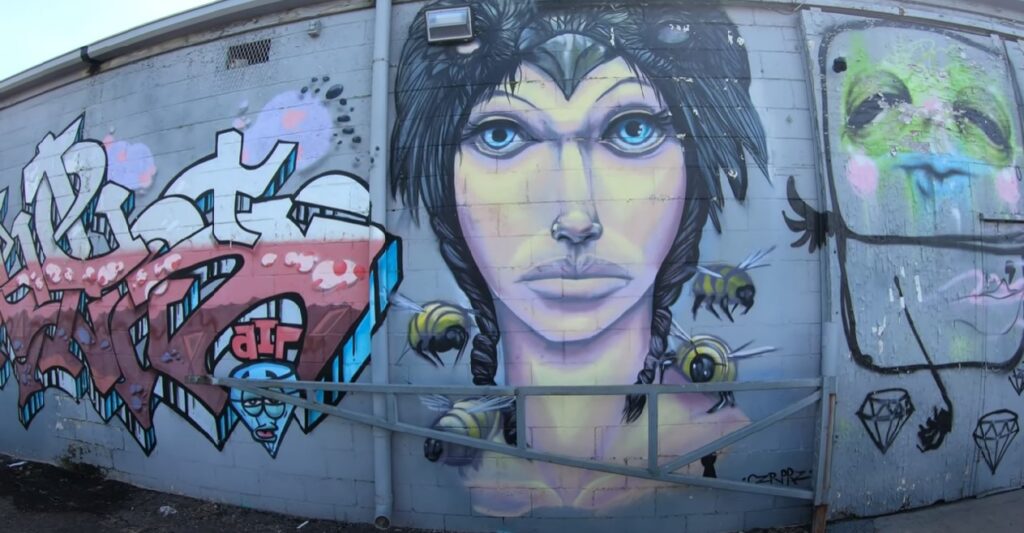The Role of Street Painting in Promoting Tourism in Detroit: A Colorful Path to Cultural Exploration
Detroit, once known as the Motor City, has reinvented itself as a vibrant hub of creativity and culture. Street painting, also known as mural art or street art, has played a significant role in this transformation, attracting tourists from around the world. In this article, we will explore the role of street painting in promoting tourism in Detroit, highlighting how these captivating artworks have become an essential part of the city’s tourist experience.
1. Captivating Visual Appeal:
One of the primary reasons street painting has become a driving force in promoting tourism in Detroit is its captivating visual appeal. The murals that adorn the city’s walls exhibit a stunning array of colors, intricate designs, and powerful imagery. They act as outdoor galleries, captivating the attention of passersby and inspiring awe and curiosity. Tourists are drawn to the unique and vibrant street art scene, eager to explore the neighborhoods and uncover the hidden gems that each mural reveals.
2. A Cultural Tapestry:
Street painting in Detroit reflects the city’s rich cultural tapestry. The murals tell stories, celebrate local heritage, and honor influential figures. They serve as visual narratives, capturing the essence of Detroit’s history, diversity, and resilience. From murals depicting iconic musicians like Aretha Franklin and Marvin Gaye to artworks celebrating the city’s automotive legacy, each piece contributes to the overall cultural fabric of Detroit. Tourists are captivated by the opportunity to immerse themselves in this cultural tapestry, gaining insights into the city’s identity and connecting with its roots.
3. Interactive and Immersive Experiences:
Street painting offers tourists interactive and immersive experiences that go beyond simply observing artwork. Many murals invite visitors to engage with the artwork, whether through taking photographs, posing in front of specific elements, or interacting with the artists themselves. This interactivity enhances the tourist experience, creating memorable moments and opportunities for social media sharing. Visitors become active participants in the art, adding their own stories and perspectives to the visual narrative of Detroit.
4. Street Art Tours and Festivals:
The growing interest in Detroit’s street art scene has led to the development of street art tours and festivals. These organized experiences offer curated journeys through the city’s vibrant neighborhoods, providing tourists with insights into the history, techniques, and stories behind the murals. Street art tours connect tourists with local artists and community leaders, fostering a deeper understanding and appreciation of the artworks. Festivals, such as the Detroit Mural Festival, bring together artists from around the world, showcasing their talents and creating a vibrant atmosphere that attracts both locals and tourists.
5. Revitalization and Neighborhood Exploration:
Street painting has played a vital role in the revitalization of Detroit’s neighborhoods, making them more attractive and inviting for tourists. Areas once plagued by urban decay have transformed into colorful destinations, featuring murals that breathe new life into the streets. Tourists are enticed to explore these revitalized neighborhoods, appreciating the unique blend of art, history, and community spirit. The presence of street art has led to the development of art-centric businesses, including galleries, cafes, and shops, creating an ecosystem that supports both artists and local entrepreneurs.
6. Economic Impact:
The promotion of street painting as a tourist attraction has had a positive economic impact on Detroit. The influx of tourists visiting the city’s street art hotspots has generated increased foot traffic and consumer spending. Businesses catering to tourists, such as hotels, restaurants, and shops, have benefited from this surge in visitors, contributing to the local economy. Additionally, the popularity of street art has led to job creation and entrepreneurial opportunities, including street art-related merchandise, guided tours, and art-focused events.
Street painting has emerged as a powerful catalyst in promoting tourism in Detroit. Its captivating visual appeal, cultural significance, interactive experiences, and role in neighborhood revitalization have all contributed to its effectiveness as a tourist attraction. The murals that adorn Detroit’s walls tell stories, celebrate local heritage, and honor the city’s rich history, providing tourists with a unique and immersive cultural experience.
Generated by Chat GPT
